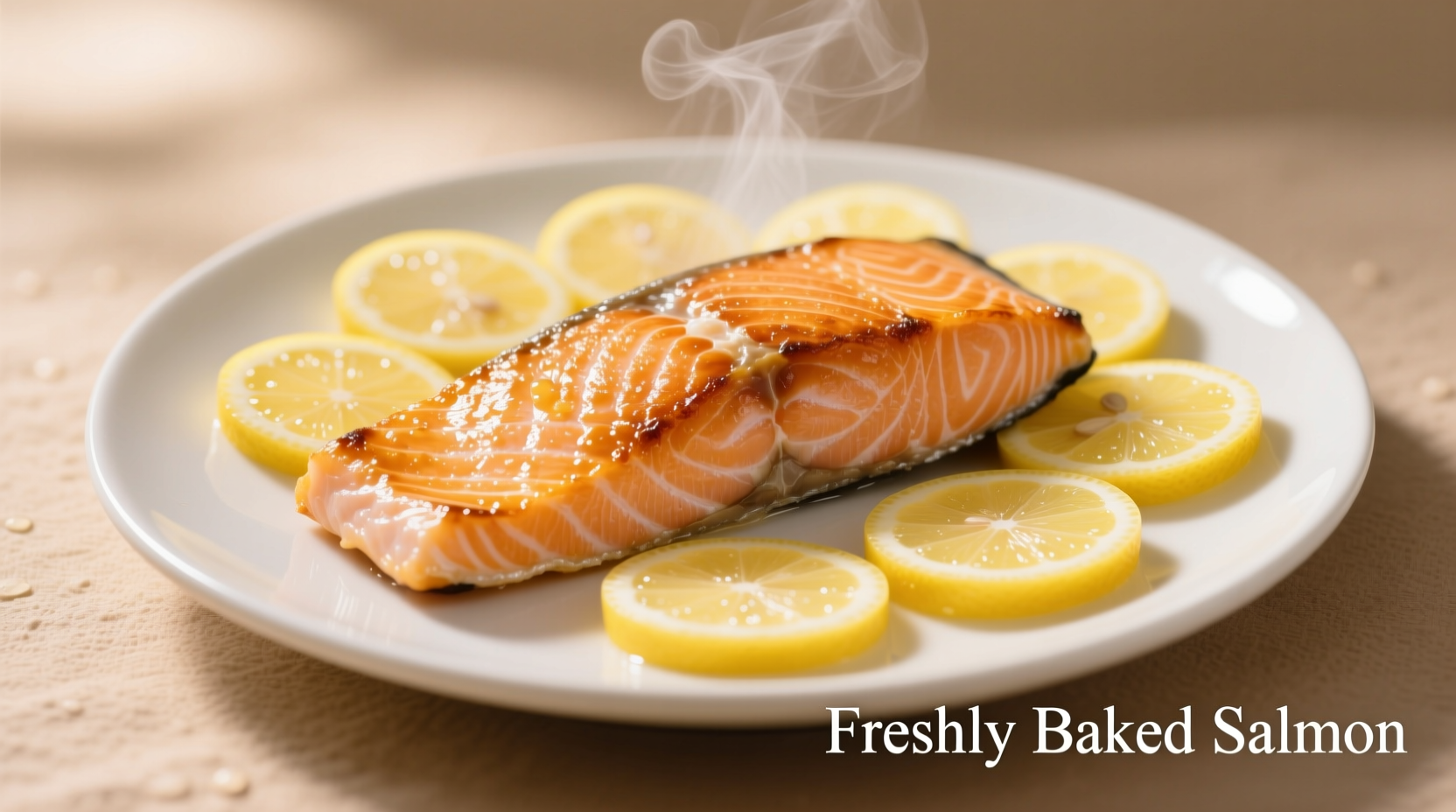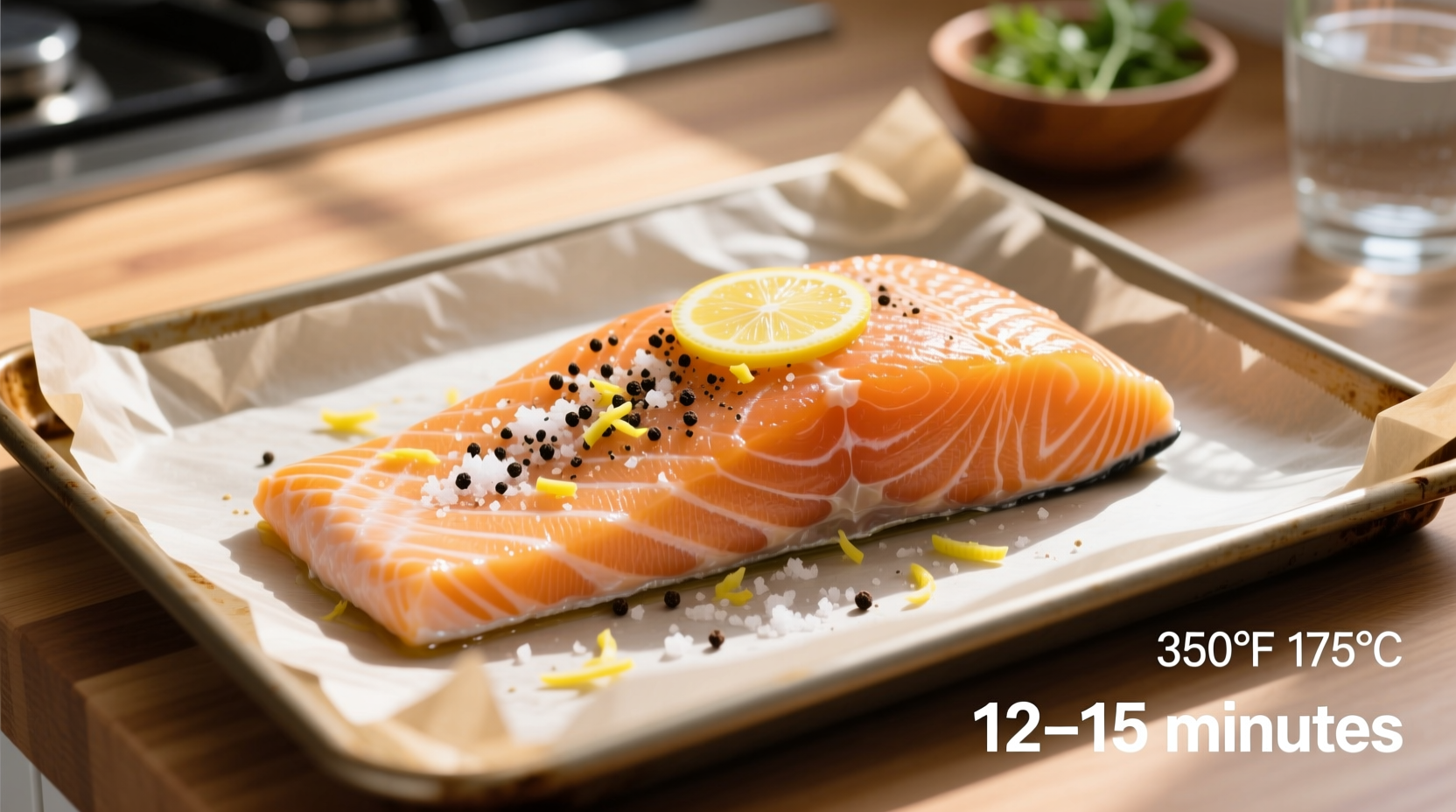For perfectly cooked salmon at 350°F, bake for 12-15 minutes per inch of thickness until it reaches 145°F internally. Most standard 1-inch fillets require 12-15 minutes, while thicker cuts may need up to 20 minutes.
When you're preparing salmon in the oven, getting the timing right makes all the difference between flaky perfection and dry disappointment. Baking salmon at 350°F provides gentle, even heat that preserves moisture while ensuring thorough cooking. This temperature strikes the ideal balance for home cooks seeking restaurant-quality results without specialized equipment.
Why 350°F Is the Perfect Temperature for Salmon
Cooking salmon at 350°F delivers consistent results for several science-backed reasons. This moderate oven temperature allows heat to penetrate gradually, preventing the exterior from overcooking before the interior reaches the ideal doneness. Unlike higher temperatures that can cause proteins to tighten too quickly, 350°F maintains the delicate fat structure that gives salmon its characteristic moist texture.
According to culinary research from America's Test Kitchen, lower baking temperatures like 350°F produce more evenly cooked fish with less moisture loss compared to higher-heat methods. The United States Department of Agriculture confirms this temperature safely cooks fish while preserving quality.
Key Factors That Determine Your Exact Cooking Time
While the standard guideline provides a solid starting point, several variables affect your precise cooking duration. Understanding these elements helps you adapt the basic rule to your specific situation.
| Salmon Characteristic | Impact on Cooking Time | Adjustment Recommendation |
|---|---|---|
| 1-inch thickness (standard) | Base cooking time | 12-15 minutes |
| 1.5-inch thickness | Requires additional time | 18-22 minutes |
| Skin-on fillet | Skin insulates flesh | Add 2-3 minutes |
| Frozen salmon | Needs thawing time | Add 5-8 minutes |
| Cold-start (refrigerated) | Requires more time to heat | Add 3-5 minutes |
Step-by-Step Guide to Perfect Oven-Baked Salmon
Preparation Essentials
Begin by patting your salmon completely dry with paper towels—this critical step ensures proper browning and prevents steaming. Season generously with salt and pepper, then add complementary flavors like lemon slices, fresh herbs, or a light brush of olive oil. For enhanced flavor development, let seasoned salmon rest at room temperature for 15-20 minutes before baking.
The Baking Process
Place salmon skin-side down (if skin is present) on a parchment-lined baking sheet. Position the fillet in the center of your preheated 350°F oven. For most standard portions, set your timer for 12 minutes. As the cooking process nears completion, watch for these visual indicators of doneness:
- Flesh turns from translucent to opaque pink throughout
- Surface appears slightly glossy rather than wet
- Fish flakes easily when tested with a fork at the thickest point
Checking for Perfect Doneness
The most reliable method for determining when your salmon is perfectly cooked involves an instant-read thermometer. Insert the probe into the thickest part of the fillet, avoiding the bone if present. The USDA Food Safety and Inspection Service recommends cooking fish to a minimum internal temperature of 145°F, measured in the thickest part of the fish.
Many professional chefs, including those at the Culinary Institute of America, suggest removing salmon from the oven at 140°F, as residual heat will continue cooking the fish to the perfect 145°F during the 3-5 minute resting period. This technique prevents overcooking, which is the most common salmon preparation mistake according to user experience surveys.

Avoiding Common Salmon Cooking Mistakes
Even experienced home cooks frequently encounter these salmon preparation pitfalls. Understanding these challenges helps you achieve consistent results:
- Overcooking - The #1 issue reported in culinary forums, resulting in dry, tough fish
- Uneven cooking - Thicker portions remain undercooked while thinner sections overcook
- Sticking to pan - Usually caused by insufficient preheating or improper preparation
- Strong fishy odor - Often indicates the fish wasn't fresh or was overcooked
When baking multiple portions of varying thickness, arrange them on the baking sheet with thicker cuts toward the center of the oven where heat is most consistent. For optimal results, remove thinner pieces first and continue cooking thicker portions.
Serving Suggestions for Your Perfectly Cooked Salmon
Allow your salmon to rest for 3-5 minutes after removing it from the oven. This crucial step lets proteins relax and moisture redistribute throughout the fillet. Serve with complementary sides that enhance without overwhelming the delicate flavor:
- Roasted asparagus with lemon zest
- Quinoa pilaf with fresh herbs
- Wild rice with toasted almonds
- Simple green salad with vinaigrette
For an elegant presentation, place the salmon skin-side down on the plate, revealing the beautifully cooked flesh. A final squeeze of fresh lemon juice just before serving brightens the flavors without adding excess moisture.
When Standard Timing Doesn't Apply
Certain cooking scenarios require adjustments to the standard baking time. Whole salmon or very thick center-cut portions may need significantly longer cooking. When preparing stuffed salmon or recipes with heavy coatings, add 5-7 minutes to the standard time. Convection ovens typically cook 25% faster, so reduce time accordingly or lower the temperature by 25°F.
Food safety experts at the FDA emphasize that cooking times are guidelines, not absolutes. Always verify doneness with a thermometer, especially when preparing for vulnerable populations like young children, pregnant women, or elderly individuals.











 浙公网安备
33010002000092号
浙公网安备
33010002000092号 浙B2-20120091-4
浙B2-20120091-4